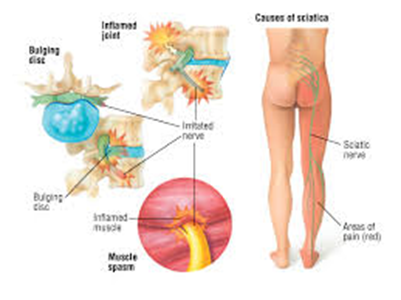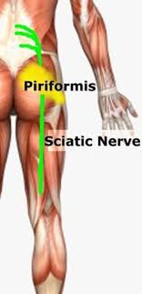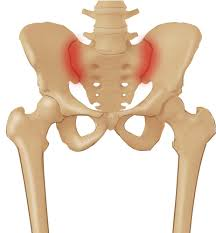|
Low back pain can not only affect our enjoyment of running but it also affects most of our daily living activities. This is not a pain that should be ignored, there are most likely elements of your running practice that can help address this niggling pain and the subsequent physical and mental energy drain suffered throughout the rest of your day. The repetitive high impact forces associated with running puts additional load through the spine. If the spine is not supported efficiently by the structures around it, pain, instability and muscle over activity can occur. Here are a few common conditions which can be experienced by runners. Sciatica What is it and what causes it? Sciatica is a widely used term to generically describe an irritation or inflammation to the Sciatic nerve. This is a large nerve that originates from the central spinal column in the lower lumber spine. It tracks through the buttock and down the back of the leg. The irritation to this nerve is caused by an impingement (compression) from numerous possible structures. The most common are at the intervertebral discs or the vertebral joints in the spine. Another culprit to display sciatica symptoms is the Piriformis (a muscle in the buttock). Sciatica is classically described as pain in the lower back radiating into the buttock and down the rear of the leg. The pain can be described as shooting or burning and can also present with numbness or pins and needles. Severe cases can result in loss of feeling, strength or function and change in sensation to the lower limb radiating as far as the foot. This article will look further into each of these causing factors to Sciatica. Intervertebral Disc herniation (bulge/prolapse) What is it and what causes it? One of the most common causes of Sciatica is a Disc herniation. Intervertebral discs are found between each vertebrae they act as a cushion throughout the spine offering support and protection. The disc are made up of a ‘jelly-like’ substance called the nucleus which is encased in a more firm elastic type substance known as the annular. A herniated disc is when some of the nucleus pushes out from the centre of the disc through a tear in the annular. This bulging nucleus can compress the nerve at its root causing the Sciatica symptoms. This type of injury is commonly the result of a degeneration of the disc. This aging disc becomes less flexible and prone to tearing. Modern lifestyle posture such as slouching or excessive loading of these joints can stress the integrity of the discs. The activity of running with its repetitive high impact loading in a pre-stressed spinal posture can increase the possibility of a disc herniation. Spinal stenosis or Spondylolisthesis What is it and what causes it? Both of these tend to cause lower back pain due to a degeneration in the spinal structures. A Stenosis is the narrowing of the spinal canal. The spinal canal is a space through the center of the vertebrae, which is where the central spinal cord travels. The narrowing can be the result of thickened degenerative ligaments or arthritic changes to the bone. This over laying of bone can narrow the spinal canal leading to compression of the spinal cord. This will present as pain in the back and often refers the sciatica symptoms described above. A Spondylolisthesis is an instability of the vertebrae, excessive movement can result in a slippage of one vertebrae onto another, this may be as a result of a fracture (more common in younger athletes) or from degenerative changes to the spine commonly seen in the over 50 population. The slippage of the vertebrae causes instability at this level of the spine and subsequent risk of compromising the space in the spinal canal. Symptoms would consist of pain in the lower back and into the buttocks, pain on walking or standing for long periods of time, pain on bending backwards. The impact of running particularly on firm surfaces is likely to aggravate symptoms of pain due to the repetitive high impact. How to treat these spinal conditions?
How to prevent them?
Piriformis Syndrome What is it and what causes it? Piriformis syndrome is a term used to identify the over activity of one of the deep buttock muscles (the Piriformis). This muscle is vital in the stability of the pelvis whilst running. When this muscle is overactive or fatigued it spasms causing pain. There can be instances of lower back pain associated with this condition. More commonly the pain radiates from the buttock on the affected side, tracking into the posterior thigh, creating the symptoms of sciatica described above. Depending on the individuals anatomy, occasionally the Sciatic nerve can become compressed by the Piriformis muscle. Most commonly when this muscle is overused, or training intensity is progressed too quickly. The Piriformis becomes tight and compresses the nerve within its muscle fibres. Pain can be experienced with prolonged sitting or standing from a seated position or while preforming a squat movement. This pain may ease with gentle movement. There may be tightness or restriction in the buttock on stretching it in a seated figure of four pose. There may also be pinpoint pain and tightness over the upper buttock to one side. How to treat it?
How to prevent it?
Sacroiliac Joint Dysfunction What is it and what causes it?
The sacroiliac joint is located at the joining of the pelvis to the sacrum (the base of the spine). Its main role is to accept the weight bearing load between the upper and lower body. This joint can become instable or restricted, both of which can result in pain in the lower back and buttock. If the neural structures are affected Sciatic like symptoms can be presented. A dull aching pain is often one sided and can be aggravated by weight bearing activities such as walking or running, sitting for a prolonged period, or standing from a seated position. Running can bring about an onset of pain due to the repetitive high impact loading particularly if this is on firm surfaces. The Sacroiliac joint can also become injured following a fall, over striding while running downhill or stumbling off a curb. How to treat it?
How to prevent it?
If in doubt about any symptoms or pain does not settle, it can be most helpful to seek advice from a registered Health Care Practitioner to ensure that you have an accurate diagnosis and an effective treatment plan is prescribed.
0 Comments
Your comment will be posted after it is approved.
Leave a Reply. |
Taylormade
|
PERFORMANCE AND REHABILITATION CLINIC
Injury Management and Conditioning Specialist
Taylormade Rehab, 1 Belle Vue, Fenny Bridges, Honiton, Devon EX14 3BJ | 07800 824557 | 07855 386634
© 2019 Taylormade | Performance & Rehabilitation Clinic. Injury Management & Conditioning Specialists | Website design by brightblueC
© 2019 Taylormade | Performance & Rehabilitation Clinic. Injury Management & Conditioning Specialists | Website design by brightblueC




 RSS Feed
RSS Feed
